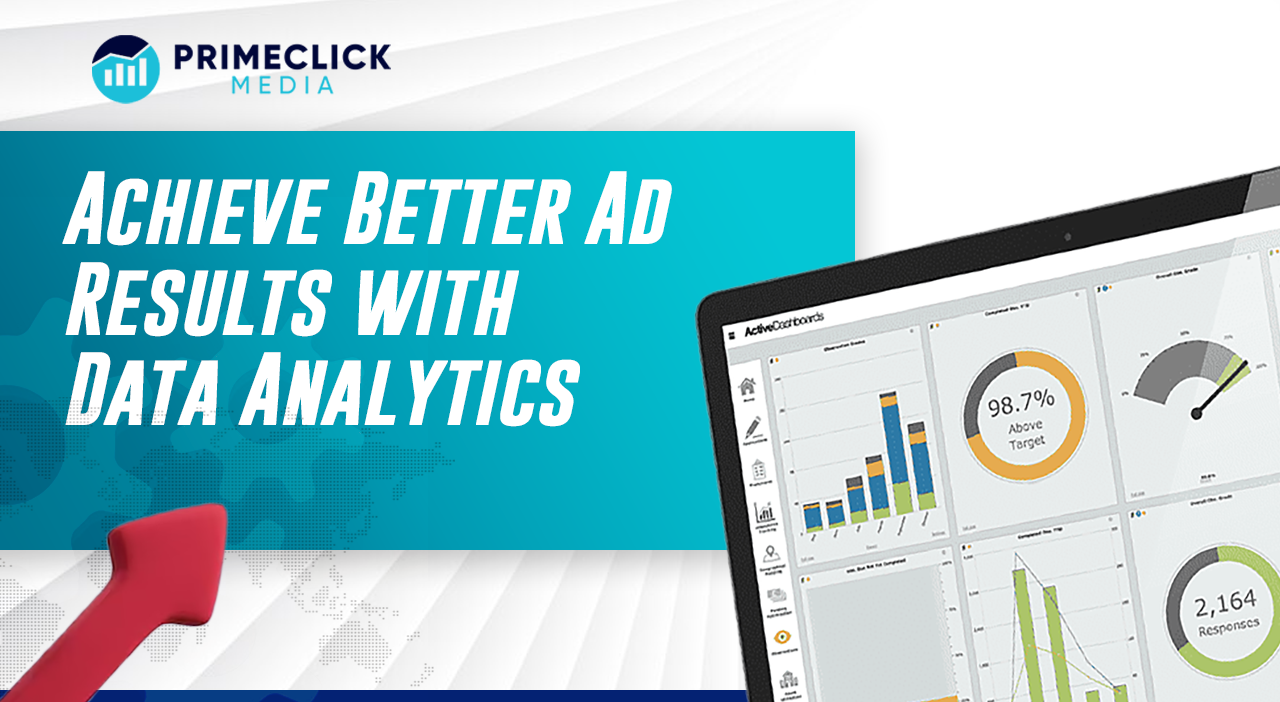Research proves that $5.6 billion of digital ad spend was wasted in 2022. This means that although a lot of money is invested in digital advertising, a reasonable chunk of it is not used properly. This could mean the content is not reaching the targeted audience, amongst other notable loopholes.
As a business owner, a powerful tool to achieve the effectiveness of advertising efforts is to harness the power of data analytics. This article explains how to achieve better ad results with data analytics in digital advertising, and its pros and cons.
Data analytics in digital advertising
Data analytics refers to the process of collecting, organising, analysing and interpreting data to make informed decisions. In digital advertising, it refers to the use of data to create ad campaigns that are more likely to convert. Such data includes metrics such as clicks, conversions, impressions and engagement rates that help understandads’ performanceg.
Benefits of data analytics in advertising
The following are some of the benefits that data analytics provides advertisers:
1. Optimising ads
By using analytics, advertisers can track the performance of their ads and understand which campaigns are performing better than others. It exposes you to the intricacies of how your audience has interacted with different parts of your ad, such as the copy, ad layout and call to action. This way, you can allocate your ad budget more effectively and ensure maximum ROI.
2. Enhanced targeting
Data analytics provides you with invaluable information about your target audience so you can tailor your ads accordingly. Advertisers can create enhanced targeted ads for their prospective clients by incorporating information about their interests, needs, demands and behaviours. Such uses are more likely to engage and convert ads that they resonate with.
3. Multi-platform integration
Utilising the combined data from different platforms and social media apps allows advertisers to deliver consistent campaigns to their target audience. Hence, they can use their learned interactions to reach their audience across different channels. This increases engagement and conversion rates.
4. Demand insights
Through data analytics, advertisers do not only learn the performance of their ads but also which products are best selling. You can gain insights into what services the users are signing up for or which plans they subscribe to. This information is also beneficial for reducing your business’s churn rate if applied effectively.
5. Timely and cost-effective
With just a click on your analytics tool, you can gain real-time information about your ads. It is a quick, easy and cost-effective mechanism to produce relevant ads and increase conversion.
Concerns about using data analytics in digital advertising
While data analytics is a useful tool, it has raised certain concerns in stakeholders; advertisers and consumers alike. Some of them are discussed below:
-
Breach of privacy
The process of collecting data of users across platforms has been argued to be a breach of privacy of social media users. Companies gain access to the personal information of the audience to create better ads. This process can be hijacked by cybercriminals to perpetuate vicious acts such as impersonation, fraud and ransomware. Google has become one of the first platforms to phase out the use of cookies on their websites to limit the tracking of user information across platforms.
-
Data misinterpretation
Analytics involves sifting large amounts of raw data, which can be difficult to organise. If you do not employ expertise, the data may be interpreted incorrectly, leading to possible media waste. This also relates to the fact that analytics are not always accurate.
-
Complexity
User behaviour is largely dynamic and ever-evolving. It can be complex to keep up with the trends and behaviours of consumers as they occur.
-
Clickbait
With information on user preference being very easy to acquire, some advertisers have become prone to using clickbait to attract engagement on their websites. While this may prove effective in gaining clicks, it is counterproductive as the audience are likely to click off if the content on the website is different from what is on the ad.
-
Unpredictable production challenges
In cases of high conversion, businesses may be unable to keep up with high demand and orders if supply is insufficient. On the other hand, businesses may incur a loss if they provide a large supply, but conversion does not meet up with it. User behaviour can be dynamic and unpredictable, even with analytics.
What’s the takeaway?
Data analytics is important to gain a deeper understanding of the performance of your ads. However, as this article has discussed, analytics also opens room for some concerns and shortcomings. Start a free consultation with Primeclick today to discuss with advertising experts how to navigate these shortcomings to achieve excellent ad results.





